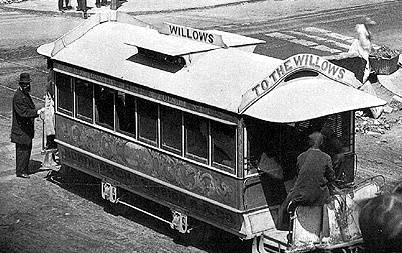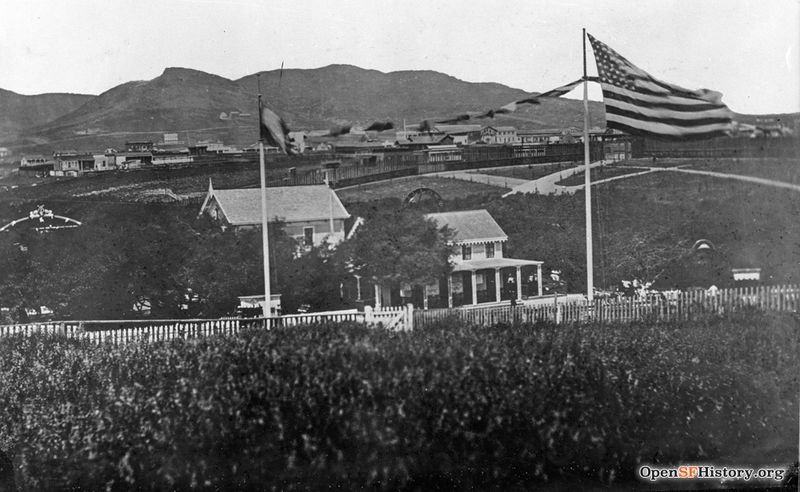Willows Resort 1860s: Difference between revisions
(upgraded and added photo and captions) |
No edit summary |
||
| (One intermediate revision by the same user not shown) | |||
| Line 10: | Line 10: | ||
''Photo: OpenSFHistory.org wnp26.592'' | ''Photo: OpenSFHistory.org wnp26.592'' | ||
<blockquote>The Willows—founded in 1859, five years after [[Russ's Garden|Russ’s Gardens]]—offered San Franciscans a “suburban retreat” from urban life downtown. It was the project of [[The Gold Rush Financiers: Pioche and Robinson|Francois Pioche]], a wealthy capitalist born in France, who designed the private garden space on a gently sloping hill, with a small stream carving through a grassy hillsides potted with high-canopy willows… The Willows was not an especially compelling attraction; when the gardens flooded in 1861—only two years after opening—Pioche closed the doors permanently, perhaps realizing the land was becoming more valuable for residential development amid the city’s population boom of the 1860s. | |||
—excerpted from ''Animal City: The Domestication of America'' by Andrew Robichaud, Harvard University Press: 2019</blockquote> | |||
<font size=4>From the Diary of John "Don Juan" Riley Robinson, Silver Magnate of Batopilas, Mexico:</font size> | <font size=4>From the Diary of John "Don Juan" Riley Robinson, Silver Magnate of Batopilas, Mexico:</font size> | ||
Latest revision as of 00:12, 3 April 2023
Unfinished History
A horse-drawn omnibus near 2nd and Harrison, heading to the Willows in the 1860s.
The Willows, a popular resort "out in the country" in the Mission District, in the 1860s. It was near today's 18th between Valencia and Mission, and the willows of its name are growing around the now-buried Mission Creek.
Photo: OpenSFHistory.org wnp26.592
The Willows—founded in 1859, five years after Russ’s Gardens—offered San Franciscans a “suburban retreat” from urban life downtown. It was the project of Francois Pioche, a wealthy capitalist born in France, who designed the private garden space on a gently sloping hill, with a small stream carving through a grassy hillsides potted with high-canopy willows… The Willows was not an especially compelling attraction; when the gardens flooded in 1861—only two years after opening—Pioche closed the doors permanently, perhaps realizing the land was becoming more valuable for residential development amid the city’s population boom of the 1860s. —excerpted from Animal City: The Domestication of America by Andrew Robichaud, Harvard University Press: 2019
From the Diary of John "Don Juan" Riley Robinson, Silver Magnate of Batopilas, Mexico:
August 18, 1861 I purchased some clothes, as I am about as seedy as I ever was in this life. Was busily employed all the morning in my room, showing [silver] specimens and talking of Mexico. In the afternoon I went to the Willows and spent an hour in looking at the crowds who spend their pleasant times in that beautiful retreat. It is 3 miles from the city by rail, and Sundays the cars run every 15 minutes, and are crowded with happy faces going and returning from this really beautiful place for recreation. It is beautifully fitted up with books and machinery for amusement for the children, and shooting, and innocent games for the grownups.
The Merry-Go-Round at the Willows, 1864.
Photo: OpenSFHistory.org GGNRA-Behrman GOGA 35346, wnp71.2195



